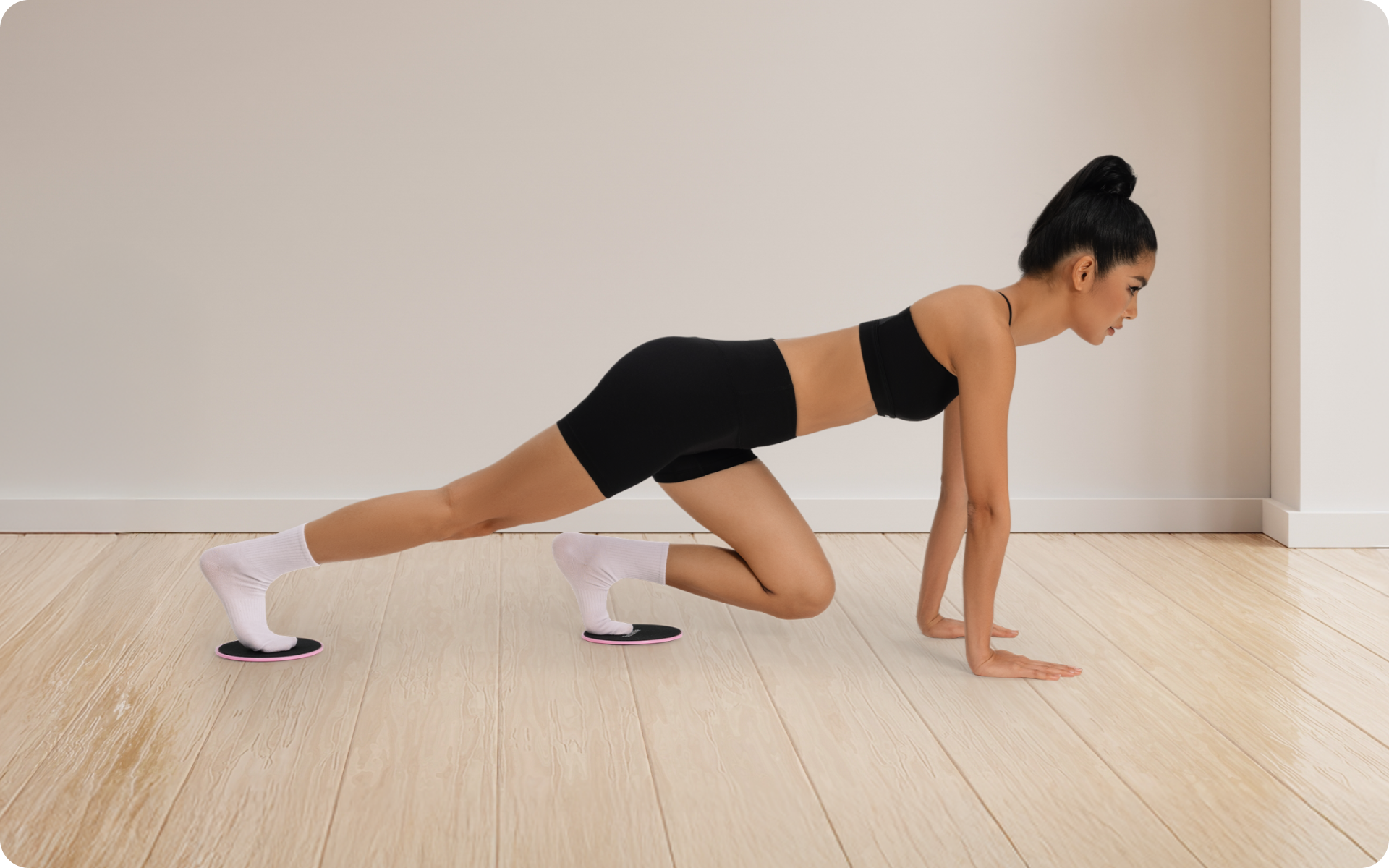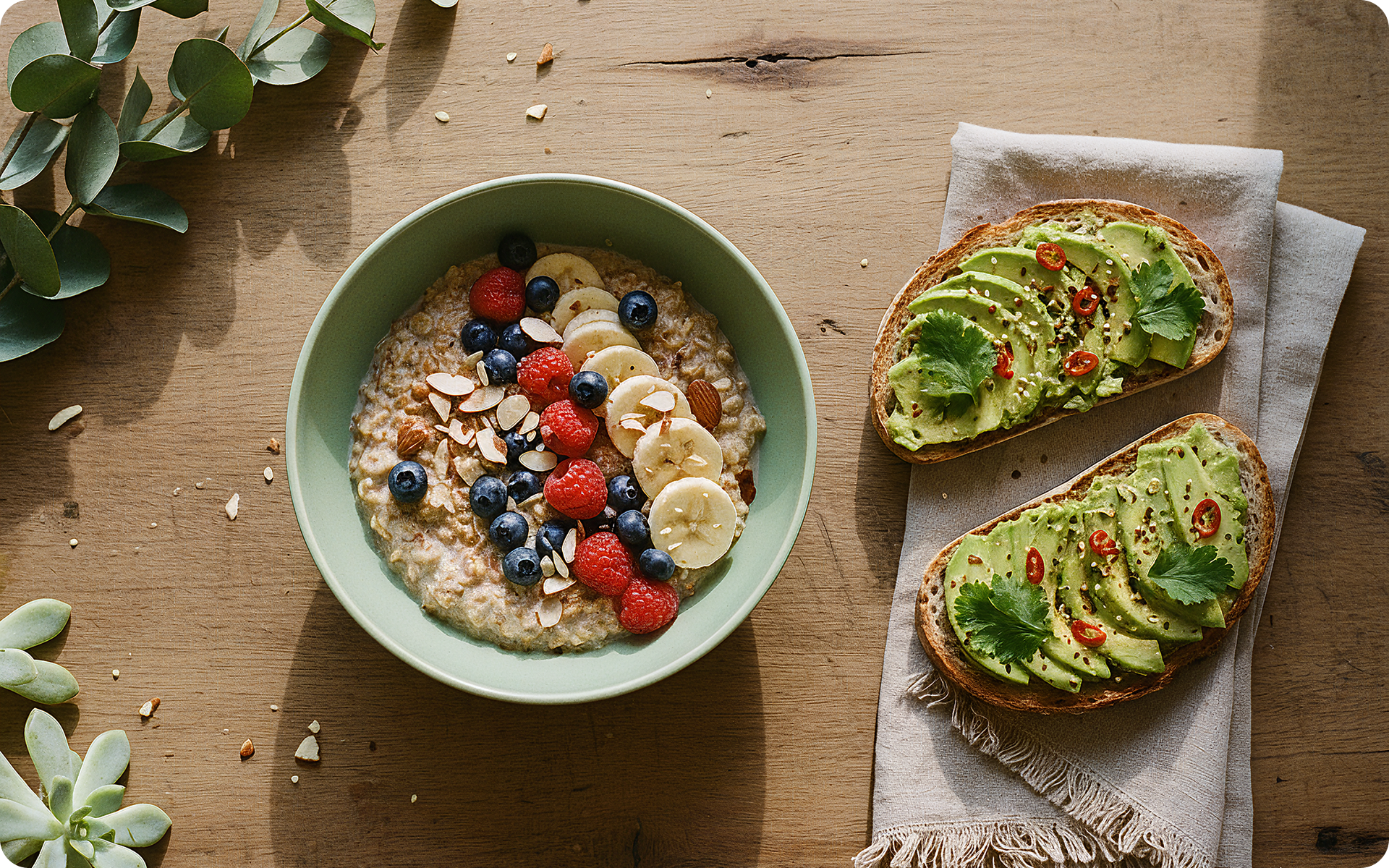Excess fat, no matter where it is, can be a detriment to one’s health. Most people know that visceral fat (fat around the organs) is worse for your health than subcutaneous fat (the ‘pinch-able’ fat just under the skin), but exactly how much more harmful is it? In this article, we’ll compare and contrast the two types of fat, discuss the factors that contribute to excess fat in the body, and see how each can be problematic.
What Is Visceral Fat?
Visceral fat is also called intra-abdominal fat or organ fat. It differs from subcutaneous fat in location (intra-abdominal as opposed to just under the skin) and characteristics. Visceral fat is located around vital organs such as the liver, pancreas, intestines, and kidneys.
It is metabolically active and produces hormones that can negatively affect the body (8).
Excess visceral fat increases the risk of diabetes, heart disease, and stroke. It also sets people up for metabolic syndrome (high blood pressure, high cholesterol levels, and type 2 diabetes) (6).
What Is Subcutaneous Fat?
Subcutaneous fat is just what the name implies – under the skin and over the muscle. It can be found all over the body, especially on the legs, hips, lower back, buttocks, and abdomen.
While subcutaneous fat is technically ‘less harmful’ than visceral fat because it has a lesser effect on metabolism etc., being overweight or obese can negatively affect health either way.
What Causes Visceral Fat?
Unlike visceral fat, the causes of subcutaneous fat are better understood. A sedentary lifestyle, age, and genetics can all contribute to fat buildup under the skin (5).
What makes subcutaneous fat different from visceral fat is that it’s not metabolically active. It also doesn’t produce any byproducts that affect other parts of the body (5).
Read More: Pistachios And Belly Fat: Why This Nut Is The Best For Weight Loss
What Causes Subcutaneous Fat?
Unlike visceral fat, the causes of subcutaneous fat are known. A sedentary lifestyle, age, and genetics can all contribute to fat buildup under the skin (5).
What makes subcutaneous fat different from visceral fat is that it’s not metabolically active. It also doesn’t produce any byproducts that affect other parts of the body. Appearance-wise, this means that it won’t show up on an ultrasound or MRI scan (5).
What Are The Health Implications Of Visceral And Subcutaneous Fat?
The health implications of both types of fat are serious, and shouldn’t be minimized.
As mentioned above, excess visceral fat can lead to a number of metabolic disorders (including diabetes and high blood pressure), as well as an increased risk for cardiovascular disease (5).
Excess subcutaneous fat is also hard on your health. Excess subcutaneous fat can lead to back pain, worsen arthritis pain, and increase blood pressure (5).
Do You Lose Subcutaneous Fat Before Visceral Fat?
The answer is no. Subcutaneous fat is more visible, but it takes more effort to lose because of the function it serves in your body. It’s the fat that cushions your joints, protects your organs, and insulates you.
Evidence suggests that visceral fat is more readily mobilized than subcutaneous fat during weight loss efforts. This is why most people who shed weight notice a change in their abdomen first- most excess visceral fat is stored in this region (5).
How You Can Reduce Visceral And Subcutaneous Fat?
Both types of fat are stubborn – they won’t go away without a fight. But with the right combination of diet and exercise, both can be reduced.
The most effective way to lose visceral fat is through a combination of diet and cardio (30-60 minutes per day).
To reduce subcutaneous fat, you need to weight train several times per week. However, you must also make sure your body is in a calorie deficit-eating less and moving more.
It’s also important to monitor your progress regularly so you can adjust your routine as needed.
If you wish to cinch your waist, tone up your bat wings, blast away the muffin top – our fitness app was created to cater to all your needs! BetterMe won’t give excess weight a chance!
Tips For Losing Body Fat
The following tips will help you lose body fat regardless of where it is stored on your body.
Choose An Exercise Regimen And Stick To It
Your body stores fat in different locations depending on your genetic predispositions. When you start to exercise, the order that your system goes about looking for that fat will be based on the same genetic pattern (7).
This is why exercise only pays off when you do it long enough-you have to be consistent for it to show you results.
There are two types of exercises you can do, and the best results come from a combination of the two:
Cardiovascular Exercise
These are exercises that raise your heart rate, increase oxygen supply to the fat stores, and burn fat. This includes activities like jogging, swimming, biking etc. Do some type of physical activity for at least 30-60 minutes per day, 4-5 days a week to start seeing results (7).
Weight Training
This is when you lift weights to build muscles in specific parts of the body. It also increases your metabolism by building muscle tissue which increases the number of calories your body burns at rest (7).
Weight training has been shown to increase the body’s ability to metabolize body fat. This means that the more you lift weights, the better your body will be at burning off subcutaneous fat (7).
Reduce Your Calorie Intake
In order for fat to stay off, you must combine exercise with the right diet. How much you’re eating is an important part of your dietary choices. It’s also important to make sure that you are eating the right types of foods.
You should be consuming fewer calories than you normally would, so your body has no choice but to burn fat for energy. Junk food is dense with empty calories, and it will slow down your progress by giving your body excess calories to burn.
At the same time, don’t eat too few calories. This can result in metabolic alterations which make your body want to store energy as fat.
Eat Plenty Of Vegetables, Lean Proteins, And Healthy Fats
Eating lean proteins will help you build muscle tissue, which increases your metabolism even further (1). While not all carbs are bad, you should try to avoid refined carbs and sugars. Get most of your carbs from whole grains, legumes, fruits, and vegetables. Also incorporate heart-healthy fats like olive oil, avocado, and oily fish. The healthier your diet is, the more likely you will be to lose weight.
Live By The 80/20 Principle
Eating healthy isn’t about depriving yourself – it’s about moderation. The 80% principle means sticking to foods that are mostly wholesome, and not worrying too much about the rest. By following this principle, you will be able to shed fat without sacrificing your quality of life.
Eat a balanced and varied diet with specific foods and food groups in moderation, and don’t worry about it when you occasionally have something unhealthy. You can still enjoy your favorite foods without sabotaging your progress.
Keep A Food Journal
Another important thing you must do if you want to lose weight is keep a food journal. Keeping track of what you eat every day can help ensure that you are staying within your calorie limit, as well as giving you the satisfaction of seeing exactly what kind of foods your body does and doesn’t like.
Seeing how many calories you are eating every day is also important so that you can adjust what you do if necessary.
Read More: Does Cheese Make You Fat? The Truth About Dairy Consumption And Weight Loss
Manage Your Stress Levels
Stress causes the release of cortisol in your system, which can cause weight gain. When you manage stress levels better you’ll find yourself more able to lose the waistline weight (4).
Meditate regularly or take up yoga if you can. Or just do something every day that you enjoy and helps you relax. You can also try to avoid unnecessary stress by planning your day better and identifying what is causing stress in your life so that you can start changing things for the better.
Avoid Alcohol
Aside from being loaded in sugar and calories, alcohol also raises cortisol levels. Cortisol is the stress hormone that makes belly fat more likely to accumulate, which is why it’s best to avoid alcohol when trying to lose weight (4).
Reduce Your Sodium Intake
Research has shown that a diet high in sodium can cause excess water retention. This makes you look and feel bloated and puffy, which is the opposite of what most people want (3).
Since being overweight can cause high blood pressure, reducing salt intake is also good for health reasons as well as weight loss (3). Of course, you don’t have to completely eliminate salt from your diet – just make sure that you aren’t eating too much.
Be sure to avoid junk food and prepackaged meals as much as possible, which are typically very high in salt content. You should also try to limit the amount of salty foods you eat, such as fast food and canned soups.
Stop Drinking Fruit Juice
Although fruit juice is loaded with vitamins, it’s very high in sugar content. Because of this, it can make weight loss more difficult when compared to eating whole fruits instead. In order to lose weight, it’s best to avoid fruit juice in favor of whole fruits.
This will help reduce your overall calorie intake and give you a healthier alternative for when you’re thirsty.
BetterMe is your fast-track ticket to a long-lasting weight loss! Tailor your fitness journey and maximize your results with just a couple of swipes!
Stay Hydrated
Drinking enough water every day can help you feel better and make you more motivated to exercise. It also helps your body get rid of toxins. Plus, you are less likely to bloat and retain fluid if you drink enough water.
Improve Your Sleep Quality And Quantity
Poor sleep quality interferes with weight loss by interfering with various hormones that regulate appetite. It can even cause your body to start storing fat instead of burning it, just to have enough energy for the day (2). Make sure you are getting enough sleep every night so that you don’t sabotage your own efforts.
Some changes you can make to improve sleep quality are: cutting back on caffeine, limiting alcohol before bed, and getting some exercise during the day. It’s also helpful to establish a relaxing routine that you follow every night at around the same time.
The Bottom Line
As you can see from above, being overweight is a complicated issue. It’s a combination of many different factors that interplay in your body.
If you want to lose weight, the most important thing that you can do is manage those factors as best as possible. By following tips like the ones above, you can start seeing results immediately.
Remember that losing weight is about consistently sticking to healthy behaviors rather than stressing yourself out by thinking about your failures. Take things one day at a time, and try to have fun!
DISCLAIMER:
This article is intended for general informational purposes only and does not serve to address individual circumstances. It is not a substitute for professional advice or help and should not be relied on for making any kind of decision-making. Any action taken as a direct or indirect result of the information in this article is entirely at your own risk and is your sole responsibility.
BetterMe, its content staff, and its medical advisors accept no responsibility for inaccuracies, errors, misstatements, inconsistencies, or omissions and specifically disclaim any liability, loss or risk, personal, professional or otherwise, which may be incurred as a consequence, directly or indirectly, of the use and/or application of any content.
You should always seek the advice of your physician or other qualified health provider with any questions you may have regarding a medical condition or your specific situation. Never disregard professional medical advice or delay seeking it because of BetterMe content. If you suspect or think you may have a medical emergency, call your doctor.
SOURCES:
- Dietary Protein and Muscle Mass: Translating Science to Application and Health Benefits (2019, nih.gov)
- Effects of sleep deprivation on performance: a meta-analysis (1996, pubmed.gov)
- Pathogenesis of Sodium and Water Retention in Edematous Disorders (1982, sciencedirect.com)
- Stress, cortisol, and obesity: a role for cortisol responsiveness in identifying individuals prone to obesity (2016, pubmed.gov)
- Subcutaneous adipose tissue & visceral adipose tissue (2019, nih.gov)
- THE DANGERS OF VISCERAL FAT (2013, endocrine.org)
- The Role of Exercise and Physical Activity in Weight Loss and Maintenance (2013, nih.gov)
- Visceral fat (n.d., sciencedirect.com)













